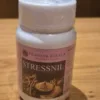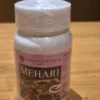Spondylosis
Cervical Spondylosis (Ayurvedic name- ‘Griva Sandhigat Vata’) is the most common disorder of the Cervical Spine. Nowadays, cervical spondylosis is a medical term that denotes age-related wear and tear, which usually affected the bone (vertebrae) joints and the disc of the neck (cervical spine). Men and women who are above 40 years are prone to this disorder.
Here the term means: Spondo means the Vertebrae (33 individual vertebrae), Lysis means disintegration (Splits into parts or just ceases to exist).
Spondylosis is considered a degenerative condition in the spines such as bone spurs(bony projection that develops along the bone edge) and degenerative intervertebral discs, which can occur in the cervical spine (also called cervical spine), thoracic spine (upper and mid back) or lumber spine (low back) where spondylosis is the medicine used for degeneration and spondylitis is used for inflammation of one or more vertebrae, such as ankylosing spondylitis.
In general, cervical spondylosis is a specific type of arthritis, which occur in the vertebral column in the neck region including connective tissue and ligament structure, and leads to a change in the cushion (intervertebral disc) between the joint of the neck and the neck-bone. Due to this movement of the neck gets restricted and the edge of the vertebrae gets damaged.
When vertebrae get affected, this change increases pressure on nerves originating from cervical vertebrae. This condition is co-related to ‘Snadhigata Greeva’ (also called osteoarthritis of the neck).
Etiological Factor of Cervical Spondylosis:
The prime cause is age-related (90 percent of people older than age 65 have evidence of Cervical spondylosis like ‘wear and tear)
- Neck injury i.e. trauma in the neck region and poor or irregular posture
- Genetic factor (the hereditary tendency is yet to be confirmed in those above 50 years of age)
- Heavy load on the neck and shoulder in daily routine, pressure on the neck can cause cervical spondylosis
- Herniated disc (bulging of the cervical disc)
- Loss of elasticity in the cervical and spinal disc.
- Stiffness in the ligaments connecting neck bones and muscles.
- Chronic degeneration of the cervical spine
- Dehydrated disc (disc begins drying out and shrinking)
Symptoms of Cervical Spondylosis:
In some cases, there may be no symptoms initially but when symptoms start manifest, they typically affected only the neck region.
- Tingling and numbness in the arm region, weakness in hands, legs, and feet due to narrowing the space between the spinal cord and nerve root.
- Difficulty in walking
- Lack of coordination
- Stiffness in the neck with restricted movements of the neck
- Headache associated with pain in the back of the neck & shoulder (‘paraplegia’ may be occurred due to this condition)
- Loss of bowel control
- Muscle spasm with general fatigue
- Loss of balance with anxiety.
Diagnosis
Imaging tests include:
- Neck X-ray
- CT scan (Computerized Tomography)
- MRI (Magnetic Resonance Imaging)
- Myelogram (X-ray or CT scan after dye injected in spinal cord)
- Nerve function test included with Electromyogram (EMG)
- Nerve conduction study (electrode is attached to the skin above the nerve is studied in this test)
Ayurvedic Concept with Management
In Ayurveda Scripture, Cervical Spondylosis can be co-related with ‘Griva Stambha’, which means Stiffness in the Neck Region, or ‘Griva Sandhigata Vata’, means ‘Vata Dosha’ get vitiated and got lodged in the neck region and causes Pain and Stiffness cervical region which lead to restricted movement of the neck.
[Note- ‘Vata Dosha’ is the Bio-humour associated with Air and Ether]According to Ayurveda, the main function of ‘Vata Dosha’ is to control the Skeleto-Muscular function and Nervous system in Human Body, so problems related to this system are caused by the aggravated ‘Vata Dosha’.
The vitiation of ‘Vata Dosha’ is mainly dependent on the 2 conditions:
- Obstruction of ‘Vata’ due to malfunctioning of ‘Pitta’ and ‘Kapha dosha’
- Vata’s aggravation due to some degenerative problem which is called ‘Vata’ increase in-dependently.
Ayurveda explained Cervical Spondylosis affected the both Lumber Spine and Sacral Spine, and Sacrum is situated in the ‘Vata’ area of the body as we know, here ‘Vata’ vitiation is caused by Aam which means toxins as Ayurveda strongly believes every ‘Dosha’ vitiation done through the toxin formation. This causes stiffness and reduces mobility in this area along with the depletion of the body’s tissue. Due to all these degenerative activities, disc degeneration occurs which brings Cervical Spondylosis.
At Pranava Kerala Ayurveda Clinic, the first line of treatment is a balance of ‘Vata Dosha’, treatment including detoxification therapy and elimination of ‘Ama’ with ‘Vata’ pacifying diet, lifestyle, and herbal preparation.
Rejuvenation Therapy and treatment with mild herbal enema aim at removing the toxins and opening circulation to loosen impurities embedded in tissue.
Treatments such as ‘Panchakarma Therapy’ are used in severe cases and for mild cases, we use internal herbal medicine and external application which are aimed at restoring the equilibrium through correction of the underlying functional in-equilibrium.
As per Ayurveda, ‘Swedan Therapy’ (hot fomentation) is highly useful in ‘Vata-Vyadhi’ (disorders of ‘Vata Dosha’). Here ‘Greeva Stambh’ is caused by ‘Vata Dosha’, so this therapy is highly recommended.
Useful herbs such as ‘Nirgundi’ (Vitex Negundo), ‘Shallaki’ (Boswellia Serrata), ‘Guggul’ (Commiphora Mukul), ‘Sonth’ (Dry Ginger Powder), ‘Giloy’ (Tinospora Cordifolia) and ‘Ashwagandha’ (Withania Somnifera).
Diet And Lifestyle Advice By Pranava Kerala Ayurveda Clinic
- A sour diet is strictly prohibited particularly curd.
- Fried food, pulses, and various preparation of pulse are contraindicated.
- A wheat diet is better than rice, and consumption of bitter vegetables like the bitter variety of drumstick and bitter gourd are very useful.
- Use comfortable posture while writing and reading.
- A morning walk is helpful in this condition, but if it is cold outside the patient should always have a woolen scarf around the neck region.
- Take a hot, long-duration shower every day if possible.
To find out more about how Ayurveda can help with the above condition, visit Pranava Kerala Ayurveda Clinic or call 0208 907 7902 to book an appointment with an expert Ayurvedic Practitioner.
Medical Advice Disclaimer
DISCLAIMER: THIS WEBSITE DOES NOT PROVIDE MEDICAL ADVICE
The information, including but not limited to, text, graphics, images and other material contained on this website are for informational purposes only. No material on this site is intended to be a substitute for professional medical advice, diagnosis, or treatment. Always seek the advice of your physician or other qualified healthcare providers with any questions you may have regarding a medical condition or treatment and before undertaking a new health care regimen, and never disregard professional medical advice or delay in seeking it because of something you have read on this website.




